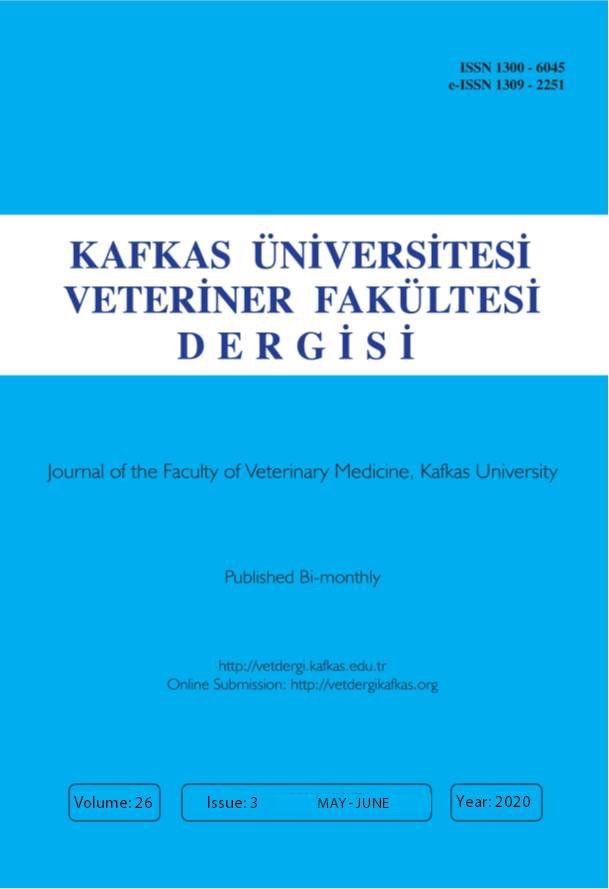
This journal is licensed under a Creative Commons Attribution-NonCommercial 4.0 International License
Kafkas Üniversitesi Veteriner Fakültesi Dergisi
2020 , Vol 26 , Issue 3
Immunohistochemical Distributions of HGF and PCNA in the Kidneys of Diabetic and Non-Diabetic Mice
1Department of Histology and Embryology, Faculty of Veterinary Medicine, Kafkas University, TR-36100 Kars - TURKEY2Department of Histology and Embryology, Faculty of Medicine, Kafkas University, TR-36100 Kars - TURKEY
3Department of Histology and Embryology, Faculty of Veterinary Medicine, Near East University, 99138, Nicosia, Turkish Republic of Northern Cyprus DOI : 10.9775/kvfd.2019.23002 Diabetes mellitus is a systemic disease that causes functional disorders in various organs and systems. In this study, we investigated the immunohistochemical localization of hepatocyte growth factor (HGF) and proliferating cell nuclear antigen (PCNA) in the kidneys of streptozocin (STZ)-induced diabetic mice. Twenty-four Swiss albino mice were divided into three groups: control, sham and diabetic groups. STZ (100 mg/ kg) was administered intraperitoneally (ip) for the development of diabetes. The avidin-biotin-peroxidase complex (ABC) technique was used to determine HGF and PCNA immunoreactivity. In diabetic kidney tissue, there was hydropic degeneration and irregularities on the epithelium of some proximal and distal tubules. Narrowing was observed in some of the Bowman"s spaces. HGF and PCNA immunoreactivities were especially intense in the inner cortex and weak in the medulla. More intense HGF and PCNA immunoreactivities were found in the individual epithelial cells of the proximal and distal tubules. Immunoreactivities were stronger in the proximal tubules than in the distal tubules. In addition, HGF and PCNA immunoreactivities were strong in both interstitial regions and papillary ducts. HGF immunoreactivity was weaker in the diabetic group compared to the other groups. PCNA immunoreactivity generally decreased in the diabetic group but increased in the glomeruli of this group. The reason for the latter result was thought to be based on the increase of mesangial cells in the glomeruli. Keywords : Diabetes mellitus, HGF, Immunohistochemistry, Kidney, PCNA










